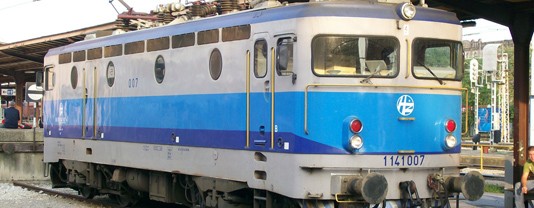Crossed by three Pan-European Corridors, the X, the Vb and the Vc, the Croatian Railways can play a major role for the economy of all the Balkan states. But the financial situation is hindering this much needed change in pace. The Croatian Railways have a relatively brief history, having only been founded in October 1991, just a few months after the outbreak of the war of independence, often referred to as the Homeland War (Domovinski rat), which began that same year, on 25 June, against the Yugoslav People’s Army.
A war which lasted until 1995 with a huge cost in terms of both human lives and extensive damage to the economic structures of the new nation, calculated by Europe Review to stand at around 37 billion dollars for infrastructures alone. Inevitably the first years after the war were dedicated mainly to restoring railway lines and services, putting off radical upgrading and modernization of the infrastructures until better times. The situation today is completely different. On 1 July 2013 Croatia became the 28th member state of the European Union and, although it has not yet adopted the euro and does not adhere to the Schengen Agreement (which abolishes border checks between member states), it is to all effects and purposes destined to play an important role on the EU scene. The road which Croatia had to follow to gain entry into the European Union began in 2003. Over the following years the EU, by means of the IPA (Instrument for Pre-Accession Assistance), financed the reconstruction and development of the country which can now also count on other support tools, the Structural Funds which, for the sector concerning infrastructures, are mainly the European Regional Development Fund and the Cohesion Fund. According to current forecasts, Croatia is expected to receive a total (consequently not only for infrastructure projects) of over 1 billion euros/year for the 2014-2020 period. It should also be mentioned that, in the context of European programming, a new funding instrument, called CEF (Connecting Europe Facility) has been introduced, the specific aim of which is to speed up the development of priority infrastructures in the fields of transport, energy and information technology. This instrument can be used to finance upgrading of the Croatian rail network.
Franco Tanel
Full article is available only for registered users.
Click the link below to download pdf version of Railway Engineering
